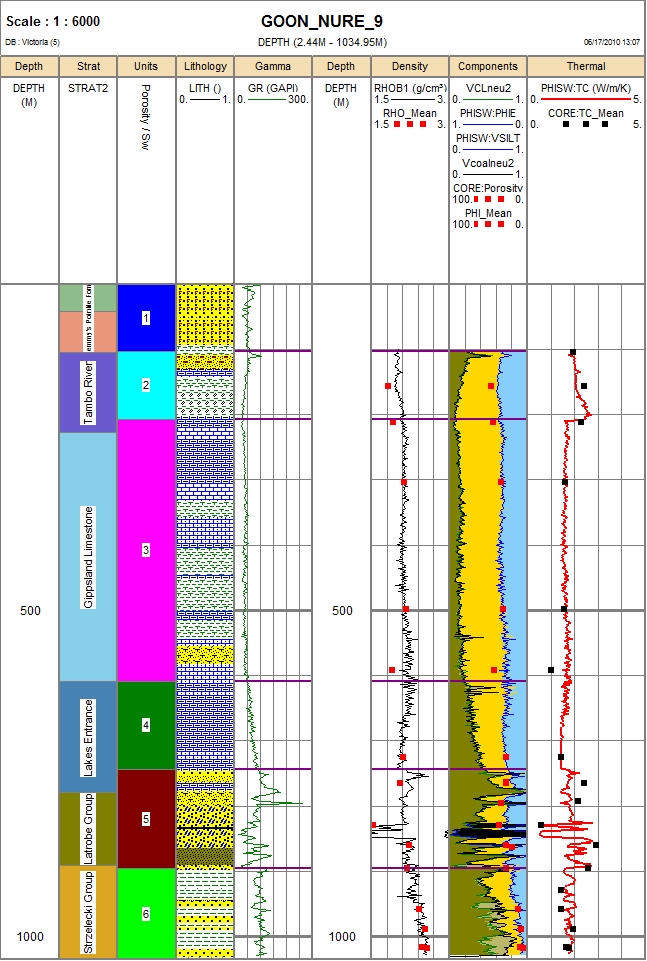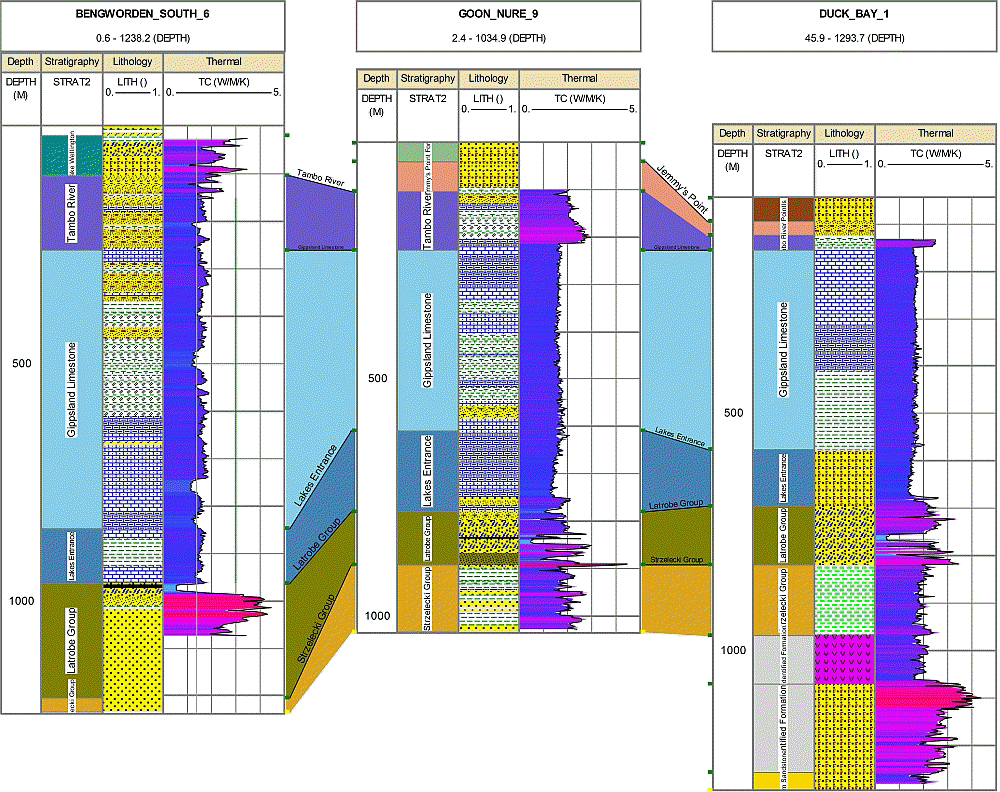![]()
Hamburg
Rheingraben
EON ERC
Den
Haag
Australia
India
References
Geothermal
study, performed for GeoScience Victoria,
Department
for Primary Industries, Melbourne – Australia
Thermal
conductivity prediction for rocks of the Gippsland Basin.
This study was performed as part of
a geothermal heat flow project across the state of Victoria,
Australia in order of GeoScience Victoria, Department for Primary
Industries, Melbourne. There are a number of historic deep
petroleum wells (2000-3000 m) with bottomhole temperature data and
geophysical logs. The objective of the study is to determine the
downhole thermal conductivities of the formations drilled in these
wells so that the heat flow can be calculated. Within these holes
a limited number of thermal conductivity analyses of available
cores were performed by Hot Dry Rocks Pty Ltd. The target of the
work requested from Geophysica GmbH was to integrate these spot
core data with logging data in order to calculate continuous
thermal conductivity profiles for the wells. These profiles should
allow the calculation of statistically representative TC-values
for the stratigraphic units of the Gippsland Basin.
For a total of 13 wells borehole
geophysical data were analysed. The log data were checked for
their overall quality and the occurrence of depth off-sets. Log
data from different wells were compared for data integrity and
possible off-sets between the wells. Finally, core data of thermal
conductivity, porosity and density produced within the running
project were implemented. Petrophysical analyses were mainly
targeted to derive shale volume, porosity and water saturation
from the borehole geophysical data. Geological information was
integrated with log data to reveal relationship of rock components
and petrophysical characteristics for the different stratigraphic
units with it’s components of shale, sand, carbonates and coal.
By literature and data analysis, matrix values for rock density
and sonic velocity were defined for the rock types.
Then, standard methods of formation
evaluation were checked for the applicability to the drilled
strata. While shale volume prediction could follow standard
methods, a specific procedure for porosity prediction was
developed which combines density and sonic slowness data. The
procedure was developed in two key wells for the other drillings.
During this stage, TC core measurements were integrated with log
data in order to calculate continuous thermal conductivity
profiles. The computed data of the different contents of shale,
shale-free matrix and free water were used to calculate thermal
conductivity profiles. The log derived thermal conductivity
profiles were calibrated with the laboratory measurements. Using
these profiles, statistical values of effective thermal
conductivity could be calculated for the stratigraphic units.

Results
displayed for one well of the Gippsland Basin. The figure shows
the log derived porosity and thermal conductivity profiles
compared with the results form laboratory investigation.

Multi-well
correlation of the thermal conductivity logs.
